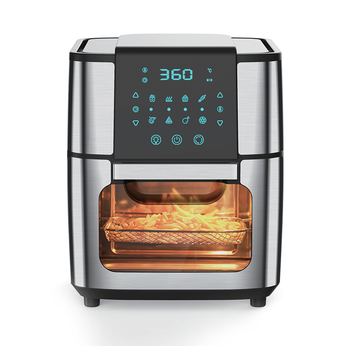Retro blenders feature motors with lower horsepower compared to modern blenders, which are often designed with more powerful and energy-efficient motors. A lower-powered motor can significantly impact the blender's ability to handle tougher ingredients like ice or hard nuts. While some high-end retro blenders are equipped with motors that have enough power to tackle these tasks, others may require several cycles to break down hard ingredients or may struggle to crush ice. The motor's strength is essential for achieving a fine blend when working with frozen or dense ingredients. Users seeking a retro blender for tough tasks like ice crushing or nut chopping should prioritize models with robust, higher-powered motors, generally rated between 400 to 700 watts, which are better suited for demanding blending tasks.
The design of the blades in a retro blender plays a crucial role in its ability to crush ice and chop hard ingredients. Many retro blenders feature flat, durable stainless steel blades, which are effective for basic blending but may not be optimized for tougher materials. Flat blades do not provide the aggressive cutting angles required to efficiently break down hard ingredients such as nuts, seeds, or ice cubes. In contrast, modern blenders are often equipped with angled or contoured blades designed to create a vortex that pulls ingredients down into the blades, improving efficiency. Despite this, some premium retro models come with specially designed, reinforced blades that are capable of handling hard ingredients, particularly when used intermittently or with a pulsing function.
Unlike modern blenders that come with multiple, preset speed functions tailored for specific tasks like ice crushing or blending nuts, retro blenders generally offer fewer speed settings. Most retro blenders have basic low, medium, and high-speed settings, with a few models including a "pulse" function for more control. The pulse feature is particularly useful for chopping or crushing hard ingredients, as it allows users to achieve a desired texture by operating the blender in short bursts. This function gives users better control over blending consistency, making it easier to avoid over-blending or under-blending tough materials.
Crushing ice is a demanding task for any blender, and retro blenders are no exception. While some retro models are designed with strong enough motors and durable blades to handle ice, they may not be as effective as modern blenders specifically engineered for ice crushing. Modern blenders often feature specialized ice-crushing modes or extra-sharp blades that can break down frozen ingredients quickly and efficiently. Retro blenders, on the other hand, may require users to manually break larger chunks of ice into smaller pieces before blending. Even when retro blenders are capable of crushing ice, they may need longer blending times or higher power settings to achieve the desired consistency, and their performance may degrade if used repeatedly for such tasks.
Retro blenders are often known for their sturdy, vintage design, which typically features high-quality metal or thick plastic housings. These durable materials contribute to the overall longevity of the blender, especially when used for everyday tasks like smoothies or milkshakes. However, the design may not always be optimized for frequent heavy-duty tasks like grinding nuts or crushing ice. The casing is often heavier and more rigid, which can make the unit more stable during use but also less adaptable to the intense demands of blending tough ingredients over extended periods. While retro blenders are generally durable, repeated use for tasks like crushing hard ingredients or processing dense materials can cause motor strain, especially if the motor isn’t rated for such tasks.


 English
English 中文简体
中文简体 English
English 中文简体
中文简体












